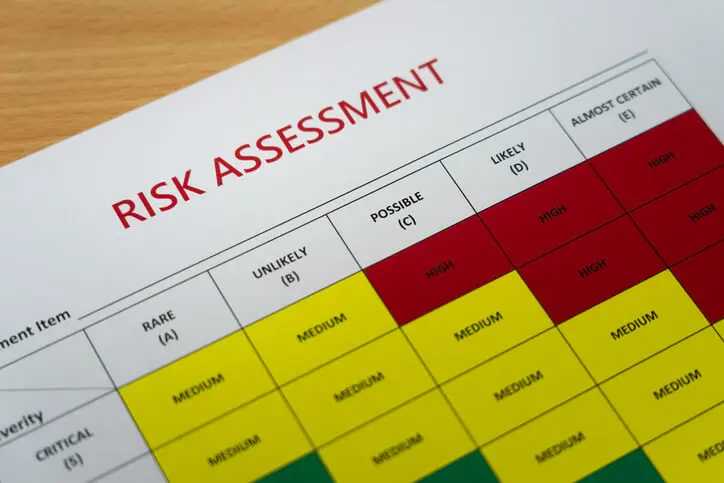Struggling with too much stock sitting idle or too little to meet demand? Inventory planning is the key to maintaining synchronised operations. This strategic process ensures businesses maintain optimal stock levels—keeping products available when needed without unnecessary costs. By analysing past trends, current sales, and future projections, businesses can fine-tune inventory decisions to avoid excess storage costs and lost sales opportunities. The result? A more efficient supply chain, reduced expenses, and greater profitability.
What Is Inventory Planning?
Inventory planning is the art and science of determining how much stock to keep and when to replenish it. It bridges the gap between demand forecasts and operational execution, ensuring businesses have the right products at the right time. Unlike assortment planning, which focuses on product variety, or demand planning, which predicts customer needs, inventory planning translates insights into stock management strategies.
Effective inventory planning relies on accurate forecasting, efficient stock level monitoring, and continuous optimisation. By integrating data across sales, marketing, and supply chain operations, businesses can build a dynamic inventory strategy that adapts to shifting market conditions—maximising efficiency and keeping customers satisfied.
Why Inventory Planning Matters
Inventory planning is a game-changer for business efficiency and profitability. Done right, it brings several key advantages:
- Cost Savings: Optimised stock levels cut down on storage, ordering, and shortage costs, preventing excess inventory from gathering dust and reducing the risk of obsolescence.
- Better Cash Flow: Less money tied up in surplus stock means more resources to invest in growth, innovation, and customer experience.
- Enhanced Visibility: A clear view of stock levels and demand patterns allows businesses to anticipate issues and make informed decisions.
- Higher Profitability: Reduced costs and streamlined operations lead to better margins, ensuring businesses stay competitive.
- Customer Satisfaction: Nothing frustrates customers more than stockouts and delays. Effective inventory planning keeps products available, ensuring faster fulfilment and a seamless shopping experience.
From e-commerce to global supply chains, mastering inventory planning is the key to staying agile, meeting demand, and keeping both customers and the bottom line happy.
Fundamental Concepts in Inventory Planning
Effective inventory planning relies on several key principles that help businesses maintain the right stock levels while minimising costs and maximising efficiency.
- Demand Forecasting: Predicting future sales using historical data, market trends, and seasonal patterns ensures businesses stock what they need—no more, no less. A clothing retailer, for example, might analyse past holiday sales and current fashion trends to anticipate demand.
- Lead Time: The time between placing and receiving an order is crucial in preventing stockouts. If a supplier takes four weeks to deliver, orders must be placed well in advance.
- Safety Stock: A buffer against demand spikes or supply chain delays, safety stock ensures products remain available even when the unexpected happens.
- Reorder Point (ROP): The inventory level that triggers a restock order, calculated as:
ROP = (Lead time in days × Average daily sales) + Safety stock
For example, with a 10-day lead time, daily sales of 50 units, and 100 units of safety stock, the reorder point would be 600 units.
- Economic Order Quantity (EOQ): The ideal order size that balances holding and ordering costs to optimise stock replenishment.
- Inventory Costs: Holding (storage, insurance), ordering (processing, transportation), and shortage costs (lost sales, backorders) all factor into effective planning.
Accurate forecasting is the foundation of successful inventory management. Without it, businesses risk either tying up capital in excess stock or losing sales due to shortages.
The world is changing, so is Demand Planning. Learn tips to move with the times.
Common Challenges in Inventory Planning
Despite best efforts, inventory planning comes with hurdles that can disrupt even the most carefully crafted strategies:
- Overstocking: Excess inventory ties up cash, increases storage costs, and risks obsolescence. This often stems from inaccurate forecasts or a fear of stockouts.
- Stockouts: Running out of products leads to lost revenue and frustrated customers. Unexpected demand surges, supplier delays, or poor forecasting are common culprits.
- Seasonal Fluctuations: Businesses with seasonal demand must anticipate and adjust stock levels accordingly to avoid surplus or shortages.
- Supply Chain Complexity: Managing inventory across multiple suppliers, distributors, and retailers requires precise coordination and real-time visibility.
- Forecast Inaccuracies: Consumer behaviour shifts, market volatility, and unforeseen disruptions make perfect forecasting nearly impossible, increasing the risk of misaligned inventory.
Other challenges include unpredictable lead times, unreliable suppliers, and poor data quality, all of which can derail inventory strategies. The key to overcoming these obstacles is agility—continuously analysing data, refining forecasts, and adapting plans to ever-changing market conditions.
Methods and Strategies for Inventory Planning
Inventory planning isn’t a one-size-fits-all approach—different businesses require different strategies based on their size, industry, and operational complexity. Here are key methods that help businesses maintain the right stock levels while minimising costs and maximising efficiency.
Economic Order Quantity (EOQ)
EOQ is a mathematical formula that determines the ideal order quantity to minimise total inventory costs, balancing ordering and holding expenses. While it assumes stable demand and fixed costs, it provides a useful starting point for optimising stock replenishment.
Just-in-Time (JIT)
JIT is all about efficiency—stock arrives precisely when needed, reducing holding costs and waste. While this method improves cash flow and streamlines operations, it requires highly reliable suppliers and accurate demand forecasts to avoid costly disruptions.
ABC Analysis
Not all inventory is created equal. ABC analysis categorises stock into:
- A-items: High-value, low-quantity products requiring strict control.
- B-items: Moderate-value products needing balanced oversight.
- C-items: Low-value, high-quantity items with simpler management.
This approach helps businesses prioritise resources and focus on the most critical inventory.
Materials Requirements Planning (MRP)
For manufacturers, MRP ensures materials and components arrive just in time for production. By aligning demand forecasts with procurement schedules, businesses can avoid excess stock while ensuring smooth operations.
Vendor-Managed Inventory (VMI)
VMI shifts inventory responsibility to the supplier, who monitors stock levels and replenishes as needed. This approach reduces stockouts, improves order accuracy, and allows businesses to focus on core operations—provided there’s trust and data-sharing between partners.
Collaborative Planning, Forecasting, and Replenishment (CPFR)
CPFR fosters collaboration between supply chain partners, aligning forecasts and replenishment schedules to minimise stockouts and improve demand accuracy. This method is particularly effective in industries with fluctuating demand and complex supply chains.
Multi-Echelon Inventory Management
Managing stock across multiple supply chain stages—from factories to distribution centres to retail stores—requires advanced planning tools and coordination. Multi-echelon inventory management reduces costs, improves product availability, and enhances responsiveness to market shifts.
By selecting and integrating the right strategies, businesses can create a tailored inventory management system that balances efficiency, cost control, and customer satisfaction.
Integrated operations make for happy customers.
Advanced Techniques and Technology in Inventory Planning
Technology is revolutionising inventory planning, making it more precise, agile, and data-driven. Businesses now have the tools to anticipate demand shifts, optimise stock levels, and respond faster to market changes.
Statistical Forecasting Models
Historical sales data meets mathematical precision in statistical forecasting. Techniques like time series analysis and regression models help predict demand by identifying trends, seasonality, and external influences like pricing and promotions. Over time, these models refine themselves, improving accuracy and decision-making.
Demand Sensing and AI-Driven Insights
Why rely solely on past data when real-time signals can fine-tune your inventory planning? Demand sensing harnesses POS data, social media trends, and even weather forecasts to detect sudden demand shifts. AI and machine learning take it further, analysing vast datasets, spotting complex patterns, and continuously learning to enhance forecasts. Imagine a retailer adjusting stock levels instantly when a product goes viral—this is the power of AI-driven inventory planning.
Smart Inventory Optimisation Tools
Businesses no longer have to manage inventory manually. Advanced software solutions streamline every aspect of inventory management:
- ERP systems unify inventory management with other business functions.
- Warehouse Management Systems (WMS) optimise stock movement, from receiving to shipping.
- Specialised inventory planning tools provide dynamic forecasting, replenishment strategies, and real-time insights.
Choosing the right tool depends on the business’s scale and complexity. A small business might opt for a cloud-based inventory solution, while a global enterprise may require an advanced ERP with AI-powered forecasting.
With cutting-edge technology, inventory planning is no longer about guesswork—it’s about precision, adaptability, and smarter decision-making.
Implementing Inventory Planning: Best Practices for Success
Effective inventory planning is essential to creating a dynamic system that adapts to changing demand, minimises costs, and ensures seamless supply chain operations. Here’s how businesses can implement and refine their inventory planning process.
Key Steps in Inventory Planning
- Forecast Demand – Use historical data, market trends, and statistical models to anticipate future sales.
- Set Reorder Points & Safety Stock – Define when to reorder and how much buffer stock to maintain.
- Establish Inventory Policies – Create clear guidelines for order quantities, replenishment cycles, and supplier selection.
- Monitor & Adjust in Real-Time – Track inventory levels and adapt based on actual demand and supply chain performance.
- Continuously Improve – Regularly assess and refine strategies to optimise stock levels and reduce inefficiencies.
Training staff and conducting periodic reviews ensure that inventory planning remains effective and adaptable over time.
Measuring Success with KPIs
Tracking key performance indicators (KPIs) helps businesses gauge their inventory efficiency:
- Inventory Turnover – Measures how often inventory is sold and replaced, with a higher rate indicating efficiency.
- Stockout Rate – Tracks how often products are unavailable, impacting customer satisfaction.
- Days Sales of Inventory (DSI) – Measures how long inventory stays on hand before being sold, with a lower DSI signalling better management.
Analysing these KPIs helps identify issues like slow-moving stock or frequent shortages, enabling timely corrective action.
Balancing Safety Stock & Costs
Finding the right safety stock level means weighing the risk of stockouts against holding costs. Too much stock ties up capital, while too little leads to lost sales. The ideal balance depends on demand variability, supplier reliability, and service level targets. Different products require different safety stock levels based on their demand patterns.
Seamless Integration with Supply Chain & Operations
Inventory planning works best when integrated with key business functions:
- Demand Planning – Aligns inventory levels with sales forecasts.
- Logistics – Ensures efficient movement of goods across supply chain nodes.
- Production – Keeps manufacturing schedules in sync with material availability.
A connected approach ensures inventory is always in the right place at the right time, optimising storage, transport, and fulfilment.
Continuous Improvement & Scalability
Inventory planning isn’t static—it must evolve with the business. Regular audits, process reviews, and data analysis help identify inefficiencies and refine strategies. As operations scale, upgrading tools, refining techniques, and expanding teams ensure inventory planning remains efficient even as complexity grows.
By adopting a proactive, data-driven approach, businesses can transform inventory planning from a routine task into a powerful driver of efficiency, profitability, and customer satisfaction.
There’s a new results-driven way to manage inventory.
Overcoming Common Challenges and Troubleshooting
Inventory planning isn’t without its hurdles, but businesses that proactively address challenges can build a more resilient and efficient supply chain. Here’s how to tackle some of the most common obstacles.
Handling Seasonal Demand
Fluctuating demand can disrupt inventory balance, but with the right strategies, businesses can stay ahead of seasonal peaks:
- Dedicated Forecasting: Analyse historical trends, market conditions, and promotional plans to predict demand.
- Strategic Stock Buildup: Gradually increase inventory levels before peak seasons to avoid shortages.
- Dynamic Reorder Policies: Adjust reorder points and quantities based on seasonal patterns.
For example, a fashion retailer anticipating winter coat sales can begin stockpiling inventory in late summer, using past sales data and weather forecasts to refine projections.
Managing Supply Chain Disruptions
Disruptions—whether from supplier delays, geopolitical events, or natural disasters—can threaten stock availability. To mitigate these risks:
- Diversify Suppliers: Avoid over-reliance on a single supplier to ensure alternative sourcing options.
- Maintain Buffer Stocks: Keep extra stock of critical items to absorb unexpected disruptions.
- Establish Contingency Plans: Develop backup sourcing, logistics, and production strategies.
A manufacturer, for instance, might maintain relationships with multiple suppliers and store additional raw materials to sustain production if a key supplier faces delays.
Ensuring Data Accuracy and Reliable Forecasting
Forecasting errors can lead to stock imbalances, but improving data accuracy can enhance inventory planning:
- Regular Audits & Validation: Ensure inventory records and sales data are consistently reviewed and updated.
- Technology-Driven Accuracy: Use automated data collection tools, such as barcode scanners and RFID tags, to minimise errors.
- Invest in Forecasting Tools & Training: Equip teams with advanced forecasting software and expertise to refine demand predictions.
For example, a warehouse management system (WMS) with real-time inventory tracking can reduce data entry errors and improve stock visibility.
Conclusion
Effective inventory planning is the backbone of supply chain success. By optimising stock levels, reducing costs, and leveraging cutting-edge technologies like AI, machine learning, and demand sensing, businesses can stay ahead of demand fluctuations and market uncertainties. A well-executed inventory strategy ensures not only operational efficiency but also a competitive edge in an increasingly dynamic business landscape.
The tools required to thrive in an ever-evolving environment are at the tip of your fingertips.






